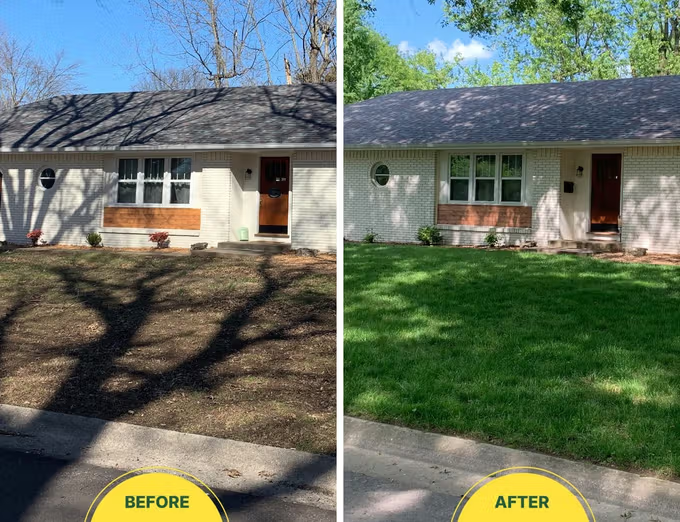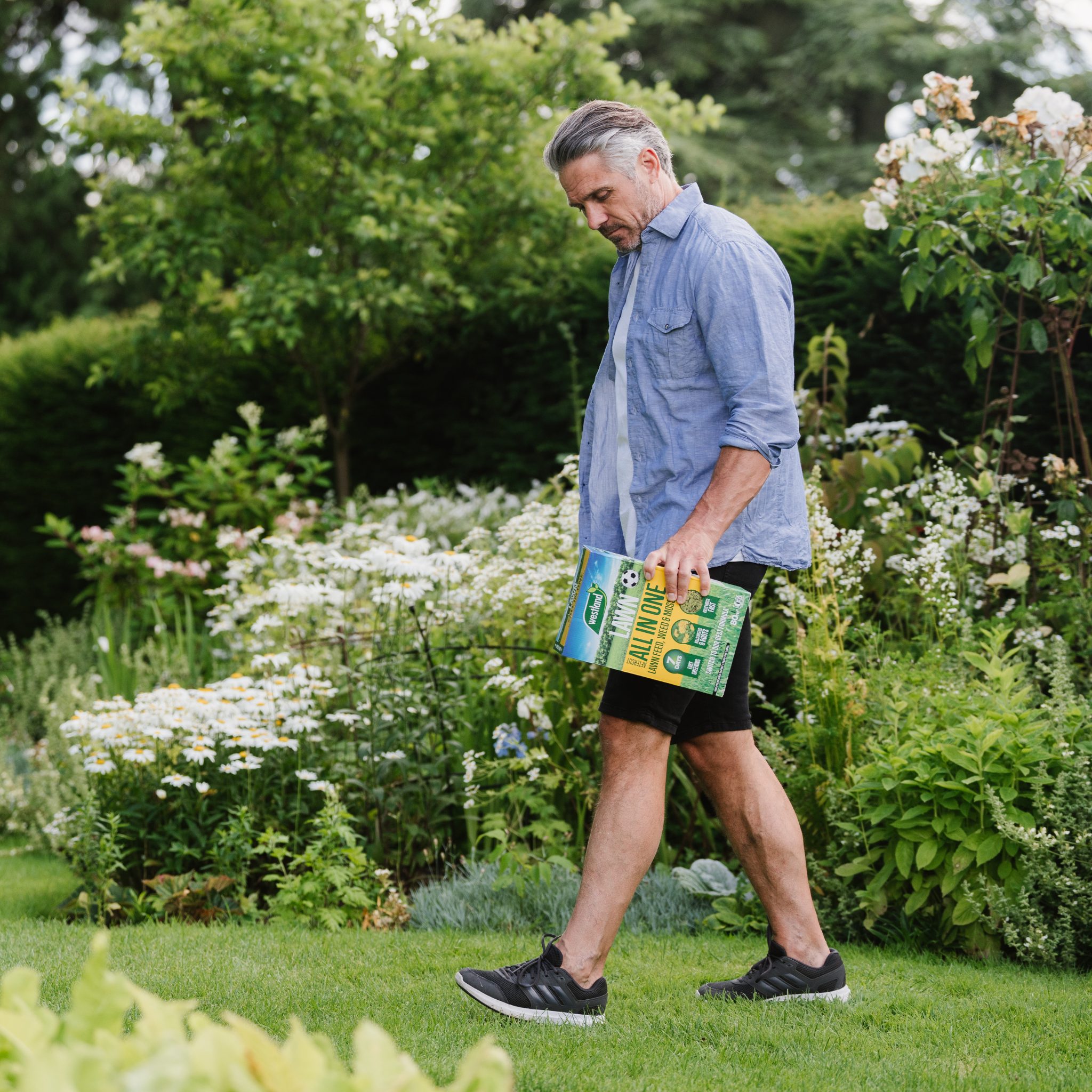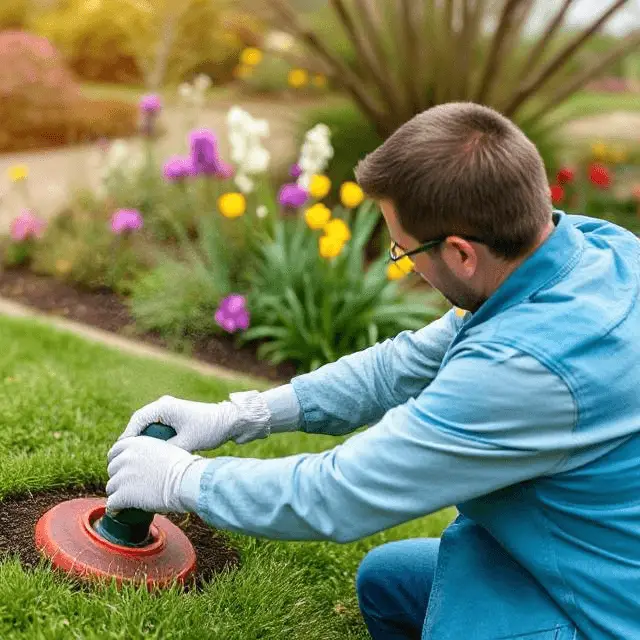Things to Do When Your Lawn Is Full of Weeds
Last Updated on July 26, 2024 by Duncan
Imagine this. You aerate or fertilize your lawn, and after a few short weeks, you notice weeds colonizing your lawn.
Or you move to a new house, and you find out the previous homeowners cared less of having a well-manicured lawn, and the lawn is full of weeds. What a bunch retards! You sulk.
Who is your best friend in times like these? Google. You Google, My lawn is all weeds. What should I do?
If you are in this predicament, I’m here to give you ideas on what to do.
Types of weeds
Before you go all Jacky Chan on the weeds, it’s good to have some background knowledge about them. There are three common types of weeds you will come across in your lawn: Broadleaf, Grass-like, and grassy.
From their name, broadleaf weeds feature big, flat leaves that don’t resemble grass or needles. One of the most popular broadleaf weeds is dandelion.
Grass-like weeds are similar to real grass and grow like grass. The only difference is they look more like a tube, and they aren’t flat. Well known grass-like weeds are onion and wild garlic.
Finally, there are the grassy weeds that are often deceiving due to their resemblance to actual grass. Like grass-like weeds, they grow the same manner as grass. Two prevalent grassy weeds are foxtails and crabgrass.
Is it wise to use herbicides if your lawn is all weeds?
When your lawn is covered in weeds, you might have the impression using a broad-spectrum herbicide such as roundup is the best way to go about it, but this isn’t the case. Many herbicides are harmful to humans, animals, and bees.
Herbicides are also known to kill germinating lawn seeds, worsening the situation.
Regardless of how badly you want the weeds out of your lawn, avoid using chemicals. Instead, use natural weed-control methods.
Getting rid of weeds naturally.
There are plenty of ways you can go about it:
You can use the good old 5% vinegar to kill weeds. Spray vinegar in the middle of the weed or to the weed flower to stop producing seeds.
For easy absorption, spray vinegar near the roots. If you don’t have regular vinegar, you can use apple cider vinegar.
Alcohol is not only effective at relieving anxiety, but you can also use it to kill the stubborn weeds. Mix a few drops of vodka with dish soap and water then spray it on your target weeds.
Alcohol works by drying out the weeds where it draws out moisture from the weeds as it’s evaporating.
This process breaks the waxy layer on the weeds and exposes the delicate weed to direct sunlight. The result is weed dehydrating and dying.
If you have bleach lying around the house, you can spray it on the weeds and kill them. How you use it depends on the type of weeds growing in your lawn.
For ordinary weeds, dilute bleach with water, but for the hardy plants, use undiluted bleach.
Increase the competition
Weeds can’t hold it if there is a lot of competition. And what better way than taking advantage of it? Plant ground covers and close plants to competition for light, water, and nutrients.
Since you have weeds, chances are you have patches on your lawn. Fix these thin areas by planting grass varieties appropriate for your area.
The grass should adapt properly to sun, shade, or a blend of both. This way, grass will thrive, and you will avoid bare patches that allow weeds to grow.
When buying grass seed, pay attention to the label and stay away from annual grass seed. Seed companies will sell you this seed that will stay green for just a year, then you have to buy new seed the following year.
You don’t want this. Only buy perennial grass.
Remove the weeds manually.
If you have a small or medium-sized yard with small patches of weed growing, you can pull out the weeds.
You can use your bare hands or use a weed removal tool such as a dandelion digger, weeder, trowel, or garden spade. You can also ask your children to do it (if you aren’t averse to child labor).
When pulling the weed, ensure you pick the entire plant so no part remains in the soil that can re-grow.
To have it easy pulling out the weeds, water your yard before weeding.
Mow the right height
You know mowing is an essential part of keeping the lawn tidy. When mowing as a weed control measure, you need to know the growing height of the weeds on your lawn. Then mow the grass a little higher than the weed height.
This way, the grass will shade the small weed and die down due to a lack of sunlight.
Some people will tell you to mow low to remove the flowing parts of the weeds.
While this is sound advice, if you have short weeds, aiming to cut them puts you at the risk of removing the grass you are looking to save. This gives the weeds enough space to space their roots, making it hard to remove them.
Burn the pesky weeds
This option is as basic as it sounds. Burn the pesky weeds. The best places to use this technique is along the sidewalks and driveways where you aren’t looking to keep other plants.
By burning the weeds, you minimize the chances of weed seeds spreading. For best results, don’t burn the entire plant. Instead, run the hot flames over the weed plant, so it loses its internal moisture.
The weed will then die naturally in a few days.
You can use plenty of tools to achieve this. The most popular one is flame-weeder. When using it, exercise caution you don’t burn your neighbor’s lawn, especially if you live in dry areas.
You don’t want your infuriated neighbor coming at you with a machete, do you?
If you have the budget, you can invest in a more advanced tool such as the NatureZap tool that resembles a dandelion digger. The device works the same as the flame weeder, but the heat to kill the weeds comes from infrared light.
Kill the grass and weeds. Practically start from scratch.
If you have tried getting rid of the weeds without success or don’t like the type of grass growing on the lawn, you can start with a clean slate.
Kill the grass and weeds, and you remain with a bare yard that you can do whatever you want with it.
One of the best ways to kill the grass and weeds is by Solarization.
Discovered in Israel, this process involves covering the lawn with a clear plastic sheeting then anchoring around the edges with bricks, rocks, soil moulds, and wood planks. Then wait for 6-8 weeks for the grass to die out.
To make the process even more effective, place a second plastic cover over the first. The best time to do Solarization is in summer when it’s warm, and the sun is at its greatest heating potential.
After the grass is dead, you can plant new grass seed or turn the area into a garden bed. This will cut down on lawn maintenance time, eliminate frustration over annoying weeds, and attract bees and beautiful butterflies to your property.


